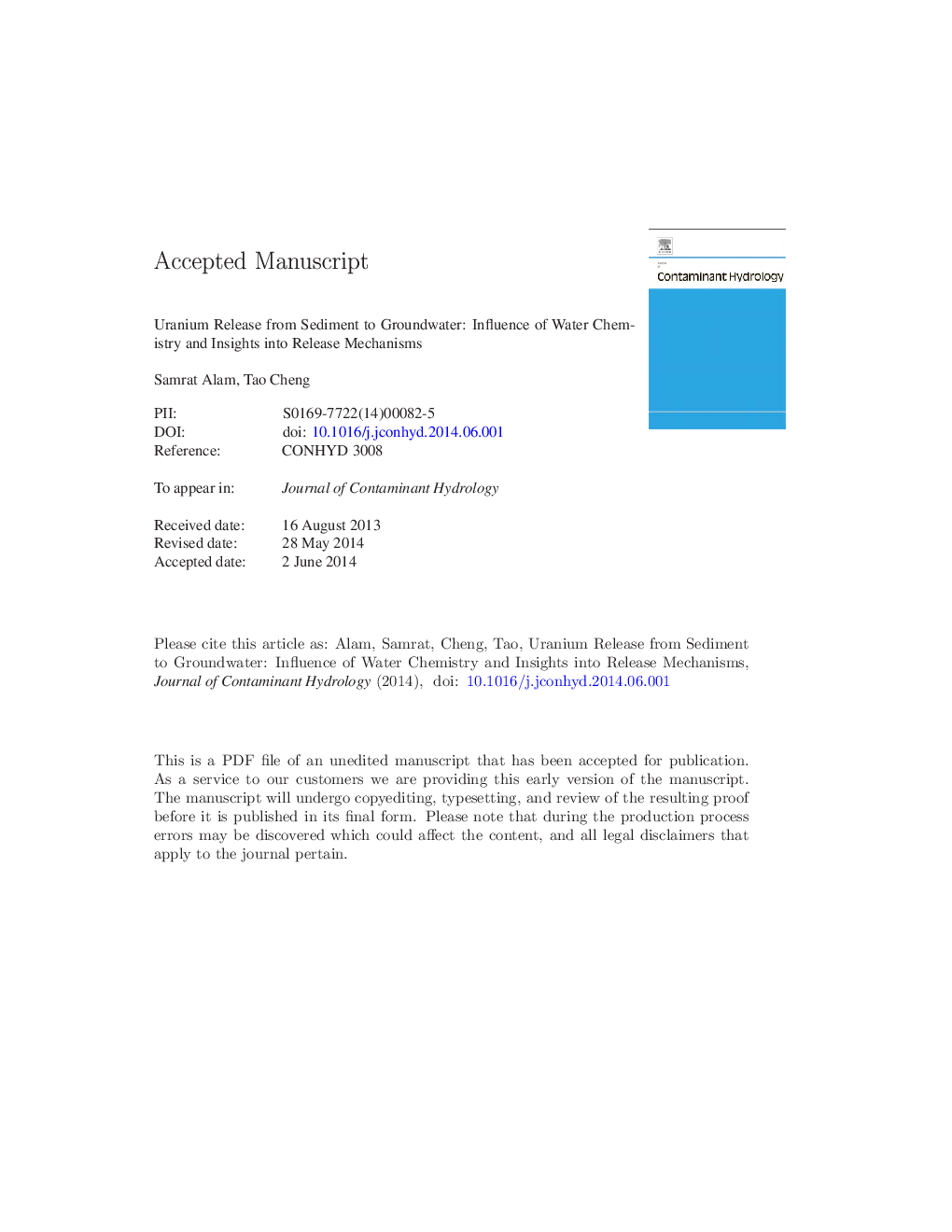| Article ID | Journal | Published Year | Pages | File Type |
|---|---|---|---|---|
| 6386522 | Journal of Contaminant Hydrology | 2014 | 60 Pages |
Abstract
Uranium (U) contamination in groundwater often results from natural geochemical processes such as mineral dissolution and desorption of adsorbed U from mineral surface. Although U adsorption and U mineral dissolution have been extensively studied, current knowledge of minerals and water chemistry conditions that control U release in uncontaminated soil and aquifers is still limited. Identification of these minerals and the knowledge of how water chemistry conditions influence U release is critical to better understand, predict, and manage geogenic U contamination in soil and groundwater. The objective of this study is to determine the extent and mechanisms of U release from a heterogeneous natural sediment under water chemistry conditions relevant to natural soil water and groundwater. A sediment sample was collected and characterized by XRD, SEM-EDX and extraction methods, and examined using laboratory leaching experiments. Our results show that Fe-Mn (oxy)hydroxides and silicate minerals are the major U hosting minerals, and a substantial fraction of U exists as adsorbed ions on minerals. We also found that U release is controlled by a number of interactive processes including dissolution of U-bearing minerals, U desorption from mineral surface, formation of aqueous U complexes, and reductive precipitation of U. Results from this study shed light on the important geochemical reactions that need be considered for developing a conceptual model that predicts U contamination in subsurface environment.
Related Topics
Physical Sciences and Engineering
Earth and Planetary Sciences
Earth-Surface Processes
Authors
Md. Samrat Alam, Tao Cheng,
